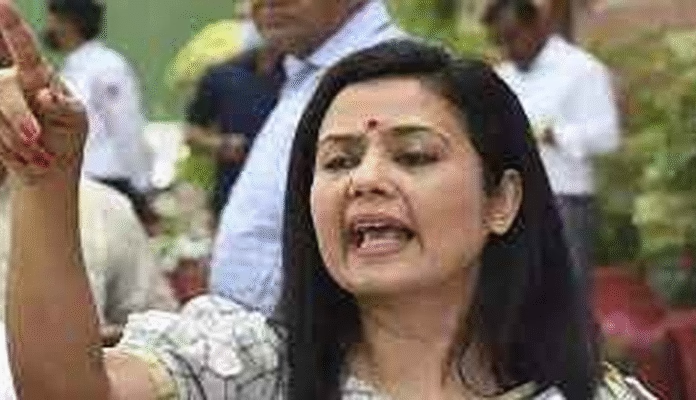
 Sanjay Saxena
Sanjay Saxena
Indian politics is a stage where new drama, fresh controversies, and intriguing stories are born every day. It’s a theater where political parties and their leaders sometimes fall into a deep silence on certain issues, while at other times they create an uproar over the most trivial matters. This silence and uproar are both part of their political playbook a well-thought-out strategy designed to distract the public, garner sympathy, or corner the opposition. The layers of this politics are so complex that the common man often fails to understand what’s really going on.
The latest example involves a language controversy in Maharashtra, where North Indians are being assaulted in the name of Marathi identity. Yet, leaders who claim to represent North India remain silent. Congress leaders like Rahul Gandhi, Priyanka Gandhi Vadra, and party president Mallikarjun Kharge have all sealed their lips. Even Rahul Gandhi, who visited Bihar for election campaigning to support Congress, avoided commenting on the matter. Samajwadi Party (SP) chief Akhilesh Yadav, who recently turned a case of misconduct against a spiritual storyteller into a caste conflict between Brahmins and Yadavs, also remains quiet. Similarly, the case in Balrampur, Uttar Pradesh, involving a Maulana allegedly converting Hindu girls through ‘love jihad’, saw deadly silence from Akhilesh and other non-BJP parties.
Sometimes, political silence on serious issues becomes a statement in itself. For instance, when a major scam surfaces or a social issue like caste violence, religious tension, or economic inequality arises, some parties and their leaders go completely silent as if they are unaware. But this silence is not a sign of weakness it’s a calculated move. They know that speaking on certain matters could hurt their vote bank. For example, when religious tensions rise over a sensitive issue, many leaders choose silence, fearing their statements might anger their supporters or give the opposition a chance to attack. This silence, while not vocal, speaks volumes.
On the other hand, when it comes to certain issues, political parties and leaders create such a loud uproar that the issue appears far more significant than it really is. Blowing small incidents out of proportion, trending topics on social media, and organizing street protests are all parts of their strategy. For example, during the 2024 Lok Sabha elections in Uttar Pradesh, some parties staged massive demonstrations over minor matters. A leader’s statement would be distorted to give it a caste or religious angle, which then became the topic of week-long debates. The uproar wasn’t because the issue was truly serious it was a tactic to grab public attention at that moment.
The politics of silence and uproar is rooted in multiple factors. The most prominent is vote bank politics. In a country like India, where caste, religion, and regionalism lie at the heart of politics, parties tread carefully. If an issue can anger their core voters, they remain silent. For example, when a caste-based violence incident occurs in a state, some parties avoid commenting because their vote bank may be linked to that caste. Conversely, if an issue offers a chance to target opponents, they create such noise that the public’s focus shifts from the real issues to political theatrics.
In Uttar Pradesh’s 2024 elections, this was quite evident. The BJP suffered unexpected defeats in some seats. While there were several reasons for this, opposition parties lost no time in projecting it as a government failure. The SP-Congress alliance promoted the slogan “Backward, Dalit, Minority” (PDA) so loudly that it became a major narrative among the masses. On the other hand, when the Ram Mandir issue came up, many opposition leaders fell silent, fearing backlash from Hindu voters. This game of silence and uproar is an old political weapon, still as effective as ever.
Another dimension of this politics is the unchecked use of media and social media. In today’s world, where everyone holds a smartphone, political parties and leaders use social media as a weapon. When they want to stir up a controversy, they trend it on X (formerly Twitter), circulate messages in WhatsApp groups, and spark endless TV debates. For instance, when an old video or statement by a leader goes viral, opposition parties blow it out of proportion until it becomes a national issue. But when controversial remarks come from their own leaders, the same parties go silent. This double standard confuses the public but remains a tried and tested political formula.
This strategy doesn’t just affect public perception it also impacts internal party dynamics and leadership decisions. Often, silence on major issues stems from internal disagreements. For example, during leadership debates within a party, senior leaders stay silent to avoid risking their positions. But when a minor issue pops up, these same leaders rush to make statements, seeking media coverage and increased influence among their supporters.
A further example of this silence and uproar strategy can be seen in the behavior of leaders like Mayawati. In 2024, following a terror attack in Pahalgam, Mayawati advised unity among all parties but also criticized the ‘disgusting politics’ of some leaders an attempt to create controlled uproar and stay relevant to her base. Yet when it came to the return of her nephew Akash Anand to the party, she maintained a conditional silence to avoid controversy. This shows how leaders selectively use silence and uproar to protect their interests.
This political strategy is not limited to national or state levels. It plays out even at the local level. In municipal elections, small issues like road repair or water supply are made into huge controversies, almost as if they are national concerns. But when it comes to major policy matters like education or healthcare reforms, the same leaders remain silent because such issues offer little immediate political gain.
The biggest casualty of this politics of silence and uproar is that it distracts the public from real problems. Serious issues like unemployment, inflation, and environmental concerns are pushed to the background, while petty controversies dominate headlines. People believe their leaders are fighting for them, but in reality, these political maneuvers are merely tools to gain power.
In today’s era of fast-moving information, political parties and leaders need to reconsider this strategy. The public is more aware than ever. Every issue is debated on social media, and people have started recognizing the meaning behind political silence and uproar. If parties and leaders begin to focus on real issues rather than theatrical politics, the face of Indian politics might truly change.



